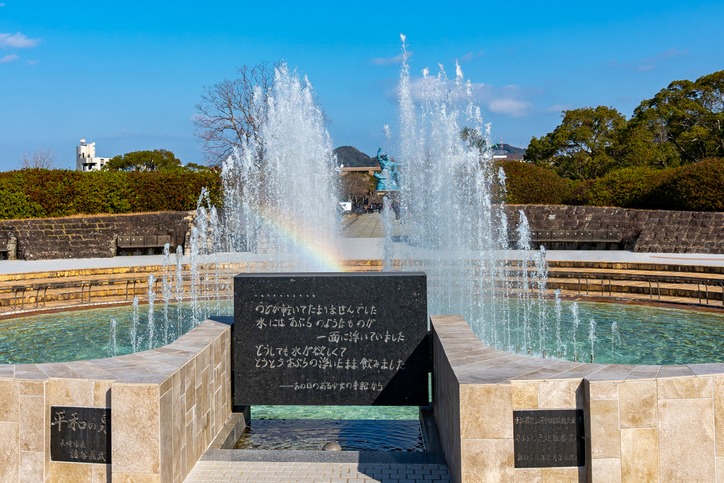80 Years after Hiroshima and Nagasaki: A Threatening Decline of the Nuclear Taboo
80 years after the atomic bombings of Hiroshima and Nagasaki, the nuclear taboo has experienced a serious decline. Risks of nuclear proliferation and nuclear conflict continue to rise, the international nuclear arms control architecture has almost collapsed, and the momentum for nuclear disarmament has practically reversed.
Three developments have severely weakened the nuclear taboo:
First, intensifying strategic rivalries are exacerbating security dilemmas. The geopolitical tensions following the Ukraine crisis have significantly damaged the international arms control architecture. The rivalry between the United States and Russia rivalry has spurred a new arms race, characterized by a series of escalatory actions and reactions. Other nuclear armed states, including China, India and Pakistan are also modernizing their nuclear arsenals to ensure reliable nuclear retaliation.
Second, the entanglement of emerging disruptive technologies with nuclear weapons systems is heightening uncertainties and risks. Countries are actively developing conventional precision strike capabilities, space and missile defense systems, cyber and artificial intelligence technologies. Emerging disruptive technologies are like a double-edged sword, with the potential to disrupt strategic stability and lead to unexpected conflict escalation. The international community has not established effective mechanisms or international norms to regulate the deployment and use of these technologies.
Third, the risk of actual nuclear war has sharply increased in recent years. Take for example, Russia repeatedly stating its intention to use nuclear weapons against Ukraine. On the other hand, Ukraine has launched several drone attacks on Russia’s strategic bombers. Nuclear tensions briefly escalated during the May 2025 military confrontation between India and Pakistan, as Indian missile strikes were rumored to have targeted one of Pakistan’s nuclear storage facilities in the Kirana Hills. Strategic discussions within the United States have suggested preparing for a limited nuclear war with China, in a future contingency in East Asia. In addition, military attacks on civilian nuclear power plants and facilities have occurred in both Russia-Ukraine and Iran-Israel conflicts, posing serious nuclear security challenges.
In future regional conflicts, if the threshold for using nuclear weapons is lowered, then both nuclear weapons assets and civilian nuclear facilities may become targets of the adversary’s military attack. This not only seriously violates international law, but also poses a huge risk of nuclear escalation and nuclear fallout, with catastrophic consequences. This is an urgent issue that the international community must work together to address and resolve.
What is even more worrying is that nuclear weapons are gaining greater public acceptance in some parts of the world. Public surveys reveal that the nuclear taboo is not as strong as the taboo against, for instance, the use of chemical weapons. If faced with extreme scenarios of life and death, a significant percentage of survey respondents accept the use of nuclear weapons. Nuclear weapons are also often associated with a country’s “strength” and “modernization”.
Since the Ukraine crisis, the call for having either indigenous nuclear capabilities or US extended nuclear deterrence has increased in parts of Europe and Asia. The North Korean and the Iranian nuclear issues may be more difficult to resolve now than before the US bombing of Iran’s nuclear facilities. The renewed risk of nuclear proliferation further heightens the fears of nuclear conflict.
Nuclear ‘No First Use’ is the key to nuclear disarmament
After it successfully detonated its first atomic bomb on October 16, 1964, China declared that it would never be the first to use nuclear weapons at any time and under any circumstances, and promised unconditional negative security assurances to non-nuclear weapon states and nuclear-weapon-free zones. China also committed to ultimately achieve the complete prohibition and total disarmament of nuclear weapons. China’s long-standing policy of nuclear ‘no first use’ plays an important role in preventing nuclear war and safeguarding the nuclear taboo. It lowers the significance of nuclear weapons in China’s national security policies, effectively reducing strategic risks, and gradually promoting the goal of nuclear disarmament. In 2024, China proposed a ‘No-first-use of Nuclear Weapons Initiative’ to the five nuclear weapon states. The United Nations Secretary General Guterres has supported the adoption of the no first use policy by all nuclear weapon states. The Association of Southeast Asian Nations, the Association of African States, and many other non-nuclear weapon states have also called on nuclear weapon states to commit to a no first use policy.
On the occasion of 80 years since the atomic bombings of Hiroshima and Nagasaki, we should push for all nuclear weapon states to commit to not being the first to use nuclear weapons against each other at any time and under any circumstances, and to commit to negotiating, as soon as possible, an international convention that prohibits the use or threat of use of nuclear weapons against non-nuclear weapon states and nuclear weapon free zones.
About the Author
Jiang Tianjiao is an Associate Professor at Fudan University’s Development Institute and Associate Director of the Center for BRICS Studies, with a research focus on international security and arms control. He has served as a fellow at Harvard, the CTBTO Youth Group and Center for Energy and Security Studies and the Wilson Center. He was also a visiting scholar at George Washington University.
The opinions articulated above represent the views of the author(s) and do not necessarily reflect the position of the Asia-Pacific Leadership Network or any of its members. APLN’s website is a source of authoritative research and analysis and serves as a platform for debate and discussion among our senior network members, experts, and practitioners, as well as the next generation of policymakers, analysts, and advocates. Comments and responses can be emailed to apln@apln.network.
Image: Fountain of Peace in Nagasaki Peace Park in sunny day. A historical park commemorating the atomic bombing of the city on August 9, 1945 during World War II. Nagasaki Prefecture, Japan. iStock


